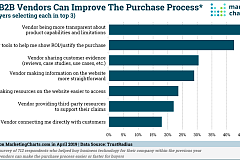Dealing with an irate customer is an inevitable part of any customer-facing or customer-service role. Whether the anger is due to a mistake on your part or a situation outside of your control, the responsibility of resolving the issue lies squarely with you.
In this comprehensive article, we give you proven strategies to effectively respond to angry customers, ensuring you turn around even the most challenging situations.
Understanding the Nature of Angry Customers
Before delving into the strategies to handle irate customers, it's essential to understand the types of angry customers you may encounter. Broadly, they can be classified into three categories:
- Customers who were upset before they interacted with you.
- Customers who became frustrated during your interaction.
- Customers who got angry after the interaction ended.
While all these customers may seem the same at first glance, they require different handling strategies based on their unique situations.
Handling Customers Angry Before the Interaction
If a customer reaches out to you already angry, it can be disheartening. But the good news is, these cases are generally the easiest to solve. Here are three key components to address these situations:
- Acknowledge. Validate their frustration and echo it back to them in your own words.
- Align. Affirm with them, let them know you've heard their concerns and understand their significance.
- Assure. Promise them you'll resolve the issue if you can't do so in the initial communication.
Your primary focus should be to align with the customer, which demonstrates that you understand their concerns and validates their feelings.
Handling Customers Who Become Angry During the Interaction
Some customers may become agitated as the interaction progresses, potentially due to something you said or an issue they encountered with your product or service.
The most common causes for such anger are misinformation from the support representative or confusion leading to frustration on the customer's part. In these situations, it's critical to acknowledge the customer's frustration and assure them that a resolution is on the way.
Handling Customers Who Get Angry After the Interaction
Occasionally, a customer may feel satisfied after an interaction, only to realize later that something wasn't as they expected. While sometimes they'll reach back out to you, but more often they'll express their dissatisfaction through your review system.
In these cases, proactively reaching out to the customer and assuring them you're working on a resolution can go a long way in mitigating their anger.
The Power of Apology
Never underestimate the power of a genuine apology. An apology is more than just expressing regret; it's about taking responsibility and proposing a remedy. A heartfelt apology can diffuse the customer's anger, making them feel heard, understood, and valued.
Techniques to Handle Angry Customers
Your goal is to provide a seamless and positive experience for your customers. Here are 17 techniques that can help you diffuse a situation and build stronger relationships:
- Stay Calm. Don't take the customer's anger personally. Maintain composure and speak in a calm and composed voice.
- Actively Listen. Let the customer express their frustration fully. Actively listening to their concerns shows empathy and understanding.
- Personalize the Interaction. Use the customer's name and introduce yourself. This creates a human connection and reminds the customer that they're dealing with a real person.
- Acknowledge the Customer's Emotions. Validate the customer's feelings and show empathy before jumping into problem-solving.
- Use Positive Language. Positive language helps to diffuse tension and steer the conversation towards a satisfactory resolution.
- Restate Their Concerns. Reiterating what the customer said shows that you're attentive and ensures you understand their issue.
- Build Trust. Show transparency and take responsibility for the issue to rebuild trust with the customer.
- Thank Them. Thank the customer for bringing the issue to your attention. This can help to build rapport and make the customer feel valued.
- Move to an Appropriate Channel. If necessary, move the conversation to a different medium to better assist the customer.
- Think Critically. Understand the root cause of the customer's anger and tailor your solution accordingly.
- Don't Take it Personally. The customer's anger is usually directed towards the product or service, not you as an individual.
- Set Clear Next Steps. Clearly communicate the next steps in the resolution process to assure the customer that their issue is being handled.
- Stay Consistent. Consistency in customer service interactions can prevent confusion and further frustration.
- Explore Solutions. Show the customer that you're exploring all possible solutions to their problem.
- Ask for Help. If needed, involve your manager or other team members to provide the best possible solution.
- Share Knowledge with Your Team. Understanding the reasons behind customer frustrations can help your team proactively address similar issues in the future.
- Hang Up (As a Last Resort). If a customer becomes abusive, aggressive, or disrespectful, you have the option to terminate the conversation after involving a manager.
Crafting Email Responses for Angry Customers
Email communication with an angry customer requires a certain level of finesse. Without real-time interaction, agents must rely on the tone and content of their emails to de-escalate the situation. Here are six common scenarios with sample email responses to help you navigate these tricky waters:
- Delayed Response. Apologize for the late reply, explain the delay, and assure the customer that their issue is now a priority.
- Conflicting Information. Apologize for the confusion, clarify the correct information, and assure the customer that you're working to prevent such miscommunication in the future.
- Rude or Unprofessional Behavior. Apologize for the behavior, assure the customer that it's not reflective of your company's values, and explain the steps you're taking to address the issue.
- Sales Process Problem. Apologize for the problem, explain the cause, and outline your plan to resolve it.
- Unsatisfactory Product. Acknowledge the customer's disappointment, explain why the issue occurred, and outline how you plan to resolve it.
- Wrong or Incomplete Order. Apologize for the mistake, explain the cause, and assure the customer that you're working to correct the error.
Turn Negatives into Positives
Handling angry customers is a delicate task that requires patience, understanding, and a well-crafted response. Remember, an angry customer is an opportunity for you to showcase your company's commitment to customer satisfaction.
By understanding their anger, acknowledging their feelings, and offering a solution, you can turn a negative situation into a positive customer experience.














